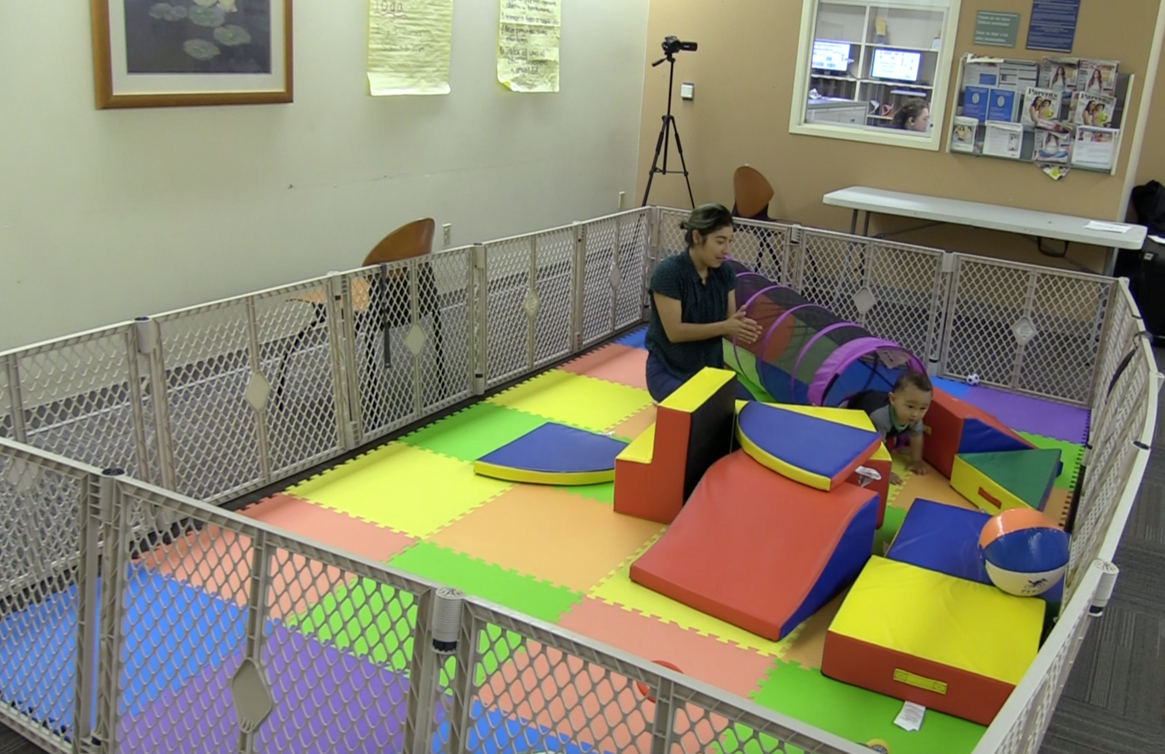Obesity
Category: Abstract Submission
Obesity II
528 - Novel Method for Assessing Toddler Activity Patterns in a Low-Income and Predominantly Hispanic Community
Saturday, April 23, 2022
3:30 PM - 6:00 PM US MT
Poster Number: 528
Publication Number: 528.239
Publication Number: 528.239
Candice E. Taylor Lucas, UC Irvine School of Medicine, Irvine, CA, United States; Dan M. Cooper, University of California, Irvine, School of Medicine, Irvine, CA, United States; Annamarie Stehli, University of California, Irvine, School of Medicine, Irvine, CA, United States; Fadia Haddad, University of California Irvine, Irvine, CA, United States; Frank Zaldivar, UCI, Orange, CA, United States; Cherryl Nugas, University of California, Irvine, School of Medicine, Irvine, CA, United States; Shlomit Radom-Aizik, University of California Irvine, Irvine, CA, United States

Candice Elizabeth Taylor Lucas, MD, MPH (she/her/hers)
Health Sciences, Associate Clinical Professor
University of California, Irvine, School of Medicine
Irvine, California, United States
Presenting Author(s)
Background: Physical activity (PA) is critical to promoting development, healthy weight, and coordination, particularly for communities with increased risk of obesity. Questionnaires are used to assess PA in infants and toddlers; however, they are limited in their ability to accurately capture activity patterns. Direct observation is an effective method for assessing PA in older children, but there is no validated observational method to assess PA in children less than 18 months.
Objective: 1. To develop a novel method for assessing activity patterns in walking toddlers2. To use this method to explore associations between maternal and toddler activity patterns in a 20-minute Active Play Session (APS) in a low-income and predominantly Hispanic community
Design/Methods: 33 mother-toddler dyads were recruited at an urban community clinic to participate in a 20-minute videotaped APS in a mobile active play lab. Mothers completed questionnaires and were instructed to engage their toddlers in play in a colorful gated space with four zones promoting throwing, crawling, walking, and climbing. Trained research assistants reviewed APS videos and coded activity patterns of mothers and toddlers at 15-second intervals in a method modified from Trost et al. 2012. Toddler active time was coded for time spent standing, bouncing, crawling, or walking. Sedentary time included time lying down, sitting, or kneeling. Spearman correlation coefficients were calculated to explore associations.
Results: n=33; Toddlers >37 weeks gestation: mean age 13 months(mo)(SD: 11-18mo); 52% female; 39.4% first-born; mean weight 11kg (SD: 9-13kg); start of walking, mean age 11mo(SD: 9-15mo); toddler mean Observed Time Active (OTA) 75%(SD: 41-96%); Moms: mean age 29.6 years; 81.8% Latina; 61% primarily speak Spanish at home; 55% have two or more children; 78.8% married or living with partner; 52.5% with monthly household income < $3,000; mom mean OTA 27% (SD: 1.2-80%). Toddler OTA (p=0.007) and maternal OTA (p=0.02) were correlated with child age. Toddler OTA and maternal OTA were not correlated (p=0.23) with each other.Conclusion(s): A 20-minute videotaped APS utilizing 15-second intervals to code toddler OTA can be used to characterize active and sedentary time in children less than 18 months. On average, toddlers engaged in active play for 75% of the APS. As expected, both maternal and child OTA were associated with child age. No correlation between maternal OTA and toddler OTA during the APS was found. Further analysis will explore associations with maternal responsiveness, and maternal and child physical and behavioral characteristics.
First Thousand (FiT) Days Play Lab Image - Picture 1.png) Picture of mother and child engaged in active play in the Mommy & Me FiT Days study mobile active play lab at a community clinic - promoting pushing.
Picture of mother and child engaged in active play in the Mommy & Me FiT Days study mobile active play lab at a community clinic - promoting pushing.
First Thousand (FiT) Days Play Lab Image - Picture 2 Picture of mother and child engaged in active play in the Mommy & Me FiT Days study mobile active play lab at a community clinic - promoting crawling.
Picture of mother and child engaged in active play in the Mommy & Me FiT Days study mobile active play lab at a community clinic - promoting crawling.
Objective: 1. To develop a novel method for assessing activity patterns in walking toddlers2. To use this method to explore associations between maternal and toddler activity patterns in a 20-minute Active Play Session (APS) in a low-income and predominantly Hispanic community
Design/Methods: 33 mother-toddler dyads were recruited at an urban community clinic to participate in a 20-minute videotaped APS in a mobile active play lab. Mothers completed questionnaires and were instructed to engage their toddlers in play in a colorful gated space with four zones promoting throwing, crawling, walking, and climbing. Trained research assistants reviewed APS videos and coded activity patterns of mothers and toddlers at 15-second intervals in a method modified from Trost et al. 2012. Toddler active time was coded for time spent standing, bouncing, crawling, or walking. Sedentary time included time lying down, sitting, or kneeling. Spearman correlation coefficients were calculated to explore associations.
Results: n=33; Toddlers >37 weeks gestation: mean age 13 months(mo)(SD: 11-18mo); 52% female; 39.4% first-born; mean weight 11kg (SD: 9-13kg); start of walking, mean age 11mo(SD: 9-15mo); toddler mean Observed Time Active (OTA) 75%(SD: 41-96%); Moms: mean age 29.6 years; 81.8% Latina; 61% primarily speak Spanish at home; 55% have two or more children; 78.8% married or living with partner; 52.5% with monthly household income < $3,000; mom mean OTA 27% (SD: 1.2-80%). Toddler OTA (p=0.007) and maternal OTA (p=0.02) were correlated with child age. Toddler OTA and maternal OTA were not correlated (p=0.23) with each other.Conclusion(s): A 20-minute videotaped APS utilizing 15-second intervals to code toddler OTA can be used to characterize active and sedentary time in children less than 18 months. On average, toddlers engaged in active play for 75% of the APS. As expected, both maternal and child OTA were associated with child age. No correlation between maternal OTA and toddler OTA during the APS was found. Further analysis will explore associations with maternal responsiveness, and maternal and child physical and behavioral characteristics.
First Thousand (FiT) Days Play Lab Image - Picture 1
.png) Picture of mother and child engaged in active play in the Mommy & Me FiT Days study mobile active play lab at a community clinic - promoting pushing.
Picture of mother and child engaged in active play in the Mommy & Me FiT Days study mobile active play lab at a community clinic - promoting pushing.First Thousand (FiT) Days Play Lab Image - Picture 2
 Picture of mother and child engaged in active play in the Mommy & Me FiT Days study mobile active play lab at a community clinic - promoting crawling.
Picture of mother and child engaged in active play in the Mommy & Me FiT Days study mobile active play lab at a community clinic - promoting crawling.